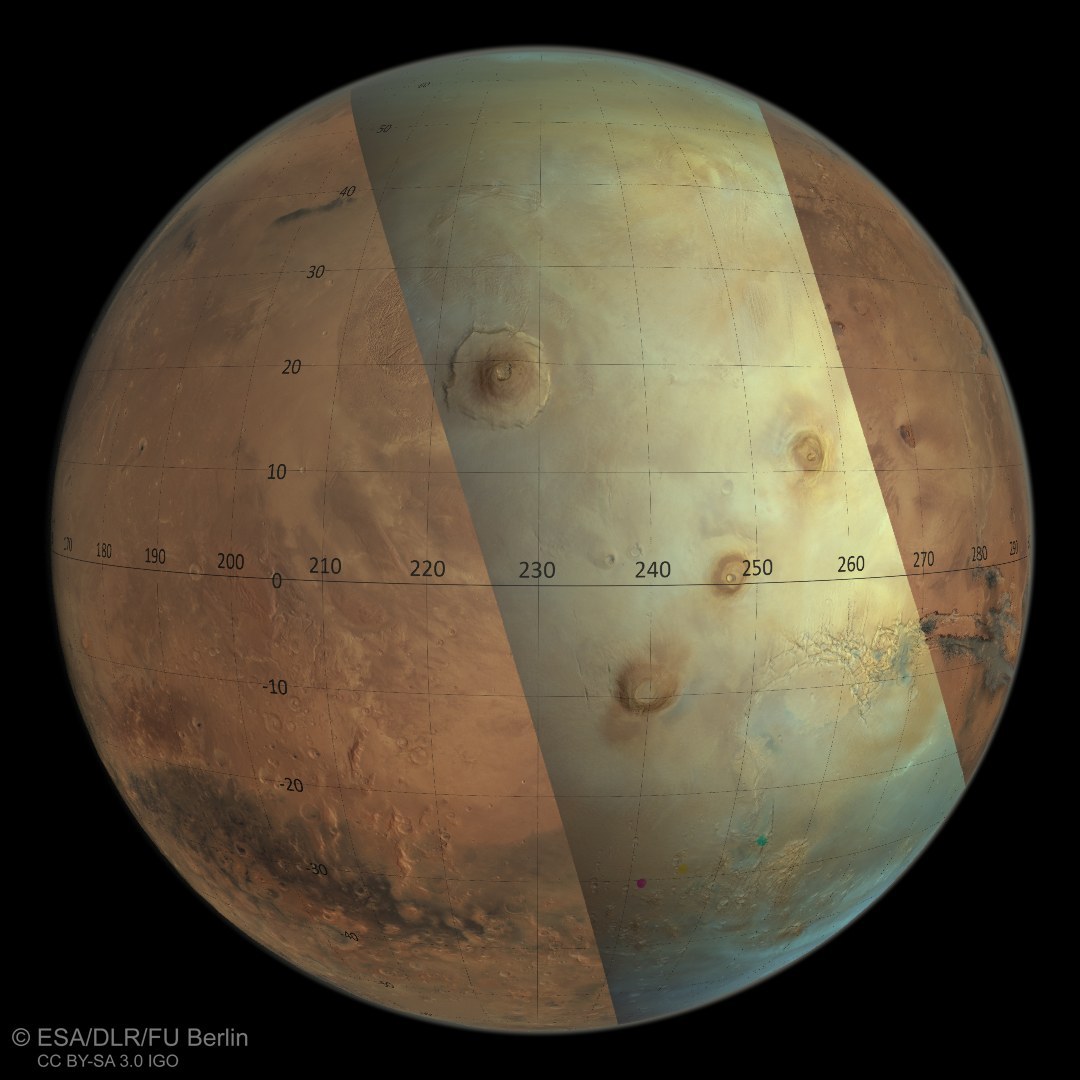Field of view of DLR's HRSC camera over Mars in orbit 25,000
Field of view of DLR's HRSC camera over Mars in orbit 25,000
ESA's Mars Express spacecraft follows a polar orbit, so it 'circles' Mars on a path that takes it over its north and south poles on every orbit. As it does so, it moves along an ellipse. During each seven-hour orbit, Mars Express approaches the Red Planet's surface, getting as close as approximately 350 kilometres from the surface. It then moves away again to a distance of around 10,500 kilometres. Images acquired from this high altitude are generally used to observe the weather in the thin Martian atmosphere or to create global views of the planet's surface, and for calibration purposes. The spacecraft is 'slewed', or tilted, over Mars in a sweeping motion, allowing the HRSC sensors to scan very large areas.

